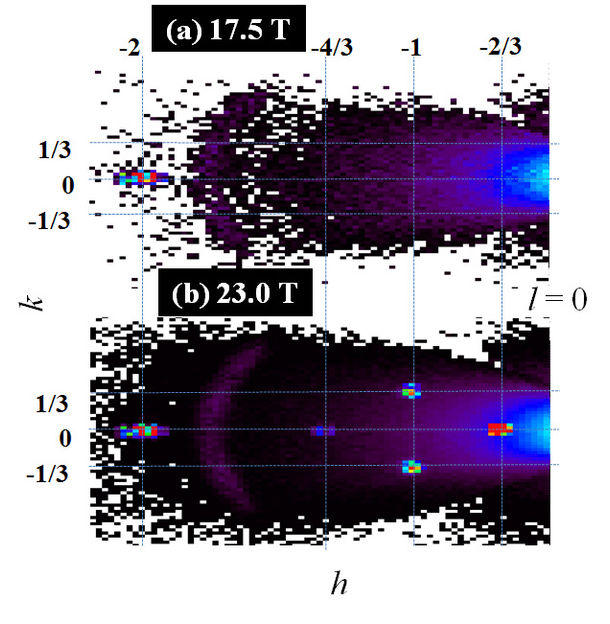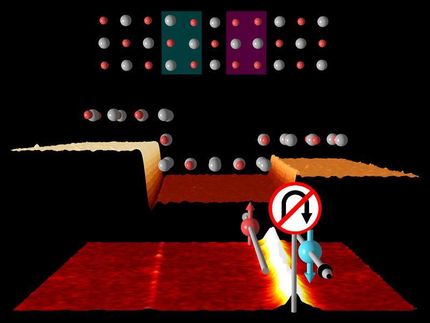Insight into a hidden order
Advertisement
A specific uranium compound has puzzled researchers for thirty years. Although the crystal structure is simple, no one understands exactly what is happening once it is cooled below a certain temperature. Apparently, a “hidden order” emerges, whose nature is completely unknown.Now physicists have characterised this hidden order state more precisely and studied it on a microscopic scale. To accomplish this, they utilised the High-Field Magnet at the HZB that permits neutron experiments to be conducted under conditions of extremely high magnetic fields.

Additional spots appear on the neutron detector starting at a magnetic field strength of 23 Tesla that reveal the new magnetic order in the crystal.
HZB
Crystals comprising the elements uranium, ruthenium, rhodium, and silicon have a simple geometric structure and should no longer be hiding any secrets. However, that is not the case – quite the contrary. At temperatures below 17.5 Kelvin, a new internal order emerges: Something in the material orders in some yet undisclosed way, releasing a certain amount of heat as a signature. Known is only that the order is not due to static magnetic moments. More than 1000 publications have already appeared on this topic without having lifted the veil.
Perfect crystals at low temperatures
However, conventional magnetic states can be induced in various ways such as doping, pressure or by large magnetic fields. This may help to shed more light on the hidden order itself. In order to study at least new magnetic states emerging from the hidden order, physicists from the HZB, from Helmholtz-Zentrum Dresden-Rossendorf (HZDR), the University of Amsterdam, and Leiden University, Netherlands, have investigated flawless crystals made of U(Ru0.92 Rh0.08)2Si2 at cryotemperatures and extremely high magnetic fields using neutrons.
New magnetic order above 21,6 Tesla
“The neutron scattering experiments conducted under extremely high magnetic fields have shown that at about 21.6 Tesla, there really is a new magnetic phase transition”, explains first author Dr. Karel Prokeš from the HZB. “This means that a new magnetic order has become established in the crystal.” This involves an uncompensated antiferromagnetic order in which the magnetic moments of the uranium atoms point alternatingly up-up-down in opposite directions.
Within minutes, the editors replied: yes, it should be published
When Prokeš submitted the joint manuscript to the renowned journal Physical Review B, he received a positive reply within 19 minutes. The work was published as a “Rapid Communication” – a new speed record that says something about the importance of this experiment for solid-state physics.






























































